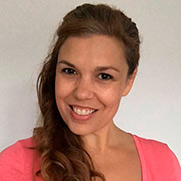What is Ahimsa?
But how is this relevant to us as Yoga Teachers in western society, specifically when we look at this fundamental principle in relation to our teaching style and weekly group lessons.
All new teachers are familiar with Patanjali as the Yoga Sutras generally form part of a 200 hour yoga syllabus. Ahimsa is the first of Patanjali’s Yamas, or the Yogis’s ethical and moral guidelines towards society. This concept refers to not only our actions but our thoughts and words as well.
So how can we aim, when teaching the physical aspect of Yoga, to align with this fundamental ethical principle? How can we adjust our practical teaching styles and methods to make sure we are not harming our students? We want to look at our thoughts, words and actions as teachers when apllying the idea of non-harming.
Here are some ideas about where Ahimsa could be applied and what this could mean :-
Thoughts – look at your own agenda and your mindset to planning a class. How do you approach lesson planning, what is your intention or theme. Are there different ways this can be achieved? Are you reflective about your teaching? Do you keep a professional reflective diary? What further training areas have you identified? Do you understand common injuries and have a plan to make sure your students are safe.
Words – What cues do you use? Are you aware of your language? How do you respond to sudents concerns as they are raised?
Actions – Do you carry out adjustments and if you do how do you how do you adjust? How do you respond to what you are seeing in the class? Are you paying attention to what students are saying and how they are moving? Are you changing what you do in response to that?
If you would like to start incorprating Ahimsa into your teaching hereare 11 ideas to get you started.
- Have a clear understanding of your intention for what you want to teach in a class but do not be attached to how you achieve that.
- Learn how to think and adapt on your feet to those on the mat in front of you.
- Use language which invites with space for people to decline
- Structure class with moments of free organic, independent moving
- Structure your class with moments of stillness
- Ask about injuries, educate yourself on what that means and learn how to adapt your teaching to support your students
- Check in with where each student is energetically at the beginning of a class and then adjust your class structure to suit who is on the mat and how they have shown up on that day. For example, if you have a class thirsty to move and work hard make sure that need is met.
- Always ask permission to touch.
- Any physical adjustments should invite and encourage a different way of moving, holding or breathing; we should not be forcing other peoples’ bodies to fit our idea or a perfect asana
- Encourage proprioception and interoception
- Sometimes it is ok for people just to rest, lets make sure that need is met above all else.
Preventing harm being caused to your students in the form of yoga related injuries in your class is a priority for a teacher. You can mitigate this, to some extent, by becoming more intuitive and responsive to your students’ needs. As a new teacher, this can be challenging, but rigidly sticking to a lesson plan may increase the risk of injury. Confidence to adapt your plans comes with experience, but you can prepare by learning how injuries happen, understanding common yoga-related injuries, and recognising when it’s safe for your students to participate.
You will also encounter students with existing injuries or a history of pain and and preventing further harm is also a challenge. It is essential to educate yourself on managing injuries in a general class setting, knowing when to refer students to specialists, and maintaining a flexible class structure. This approach helps you integrate the principle of Ahimsa (non-harm) into your teaching in a practical way.







